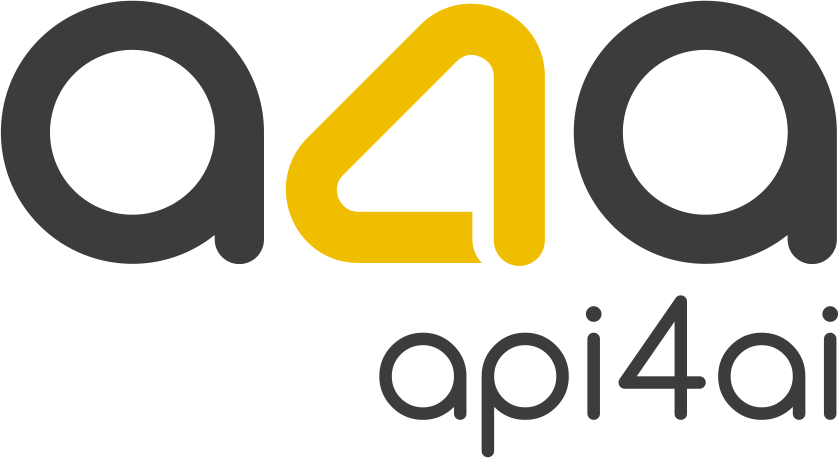Background Removal: Understanding It and Choosing the Best Solution
Introduction
If you search on Google for information related to background removal, you'll encounter dozens of solutions each claiming to be the best in the market.
This might raise some questions:
What exactly is background removal? And which solution do I personally need?
Answering these questions may not be straightforward, especially if you're not well-versed in image processing and computer vision technologies. The aim of this article is to clarify the situation and assist in selecting the most suitable solution.
Nowadays, the art of background removal stands as a pivotal technique, transforming the way we create, share, and engage with visual content. This technology, which meticulously separates the subject of an image from its background, has become indispensable across a wide array of fields. Photographers utilize it to highlight the focal point of their compositions, e-commerce platforms rely on it to present products in a clear and compelling manner, and graphic designers incorporate it to craft visually stunning artworks that captivate the audience’s imagination.
The utility of background removal extends beyond mere aesthetic enhancement; it plays a crucial role in marketing, branding, and storytelling, enabling creators to convey their messages more effectively. With the digital landscape becoming increasingly visual, the ability to swiftly and efficiently remove backgrounds from images has never been more valuable.
This burgeoning demand has given rise to an array of solutions, each promising to simplify the process of background removal. From sophisticated software tailored for professionals to user-friendly applications designed for casual users, the market is brimming with options. But with such variety comes the challenge of choice. How does one navigate this sea of tools to find the one that best suits their specific needs and skill level?
This blog post aims to shed light on this very dilemma. By comparing popular background removal solutions, we intend to provide a comprehensive guide that will help you discern the nuances of each option. Whether you’re a seasoned photographer looking for precision and control, an e-commerce manager in search of speed and efficiency, or a graphic designer on the lookout for versatility and creativity, understanding the strengths and limitations of these tools is crucial in making an informed decision. Join us as we delve into the world of background removal, comparing the leading solutions to help you find the perfect fit for your creative endeavors.
The Rise of Background Removal Technology
The journey of background removal technology is a fascinating tale of innovation and evolution, mirroring the broader trajectory of image editing's history. Initially, image editing was a labor-intensive process, confined primarily to professionals with access to sophisticated software. The earliest forms of background removal were manual and time-consuming, often involving intricate work with tools like the magic wand, lasso, and clone stamp in photo editing software. This method required a keen eye for detail and a steady hand, making it less accessible to the casual user or small businesses with limited resources.
As digital technology advanced, so did the techniques for background removal. The introduction of more intuitive software and the democratization of photo editing tools marked the first significant shift, allowing more people to dabble in image manipulation. However, it was the advent of artificial intelligence (AI) and machine learning (ML) algorithms that truly revolutionized background removal. These technologies brought about a paradigm shift, making it possible to automatically distinguish between the foreground subject and the background with a level of precision and efficiency previously unimaginable.
AI and ML algorithms have become increasingly sophisticated, learning from vast datasets of images to improve accuracy and handle complex scenarios. This includes dealing with challenging image conditions, such as fine hair, intricate objects, and varying degrees of contrast between the subject and the background. What once took hours can now be achieved in seconds, with tools offering one-click solutions that produce professional-quality results.
These technological advancements have not only made background removal more accessible but also significantly more efficient. Today, anyone with a smartphone or computer can utilize these solutions, opening up a world of creative possibilities. This accessibility has led to widespread adoption across various sectors, including e-commerce, where clean product images are crucial, and social media, where eye-catching visuals are key to engagement. Moreover, the integration of these technologies into cloud-based platforms and apps has made them readily available to a global audience, further cementing the ubiquity of background removal tools.
The rise of background removal technology exemplifies the incredible potential of AI and ML in transforming creative processes. As these algorithms continue to evolve, we can expect background removal techniques to become even more sophisticated, further blurring the lines between professional and amateur image editing. This evolution not only highlights the technical advancements in image editing but also reflects a broader shift towards more intuitive, accessible, and efficient digital tools, reshaping our visual culture and how we interact with images in our everyday lives.
Overview of Popular Background Removal Solutions
The world of digital imagery is home to a plethora of background removal tools, each with its unique strengths and user community. In this section, we will explore some of the most popular solutions available today, providing a brief introduction to their history, capabilities, and the types of users they typically attract.
Adobe Photoshop
History: A titan in the realm of photo editing, Adobe Photoshop has been the go-to software for professionals for over three decades. Introduced in the late 1980s, it has evolved significantly, incorporating more sophisticated tools for background removal.
User Base: Photoshop is favored by professionals in photography, graphic design, and digital art for its comprehensive suite of editing tools, including advanced background removal features.
Canva
History: Launched in 2013, Canva has quickly risen to prominence as a user-friendly graphic design tool that caters to both professionals and novices. It offers a simple, drag-and-drop interface for designing various types of digital and print media.
User Base: With its intuitive design and accessibility, Canva attracts a wide range of users, from small business owners to educators and social media marketers, looking for quick background removal tasks without a steep learning curve.
Remove.bg
History: Introduced in 2018, Remove.bg focuses exclusively on removing backgrounds from images using AI technology. It quickly processes images, providing clean cutouts of subjects without manual intervention.
User Base: Remove.bg is popular among e-commerce retailers, marketers, and individuals who need to quickly remove backgrounds from photos without detailed editing capabilities.
GIMP
History: The GNU Image Manipulation Program (GIMP) is a free, open-source image editor that has been around since 1996. It offers a wide range of tools, including those for background removal, and is often touted as a free alternative to Photoshop.
User Base: GIMP is widely used by hobbyists, freelancers, and those in need of a robust editing tool without the price tag of commercial software. Its complexity and versatility make it suitable for users with a bit more technical expertise.
API4AI
History: Launched in 2020, API4AI is a company that provides AI-powered cloud-based APIs for image processing, covering a wide range of tasks related to detection, classification, recognition, segmentation, and more. Their solutions are available through a subscription model. They also offer custom development services in the area of computer vision and machine learning.
User Base: API4AI appeals to professional users, as their solutions are made 'by developers, for developers,' looking for automation tools to process a high volume of digital content with minimal effort.
Clipping Magic
History: Clipping Magic is a web-based tool that specializes in automatic background removal with the help of AI. It offers a simple interface for quickly producing professional-looking cutouts.
User Base: This solution is favored by online retailers, product photographers, and designers who need efficient background removal for large volumes of images.
Each of these solutions has carved out its niche in the vast landscape of background removal tools, catering to a wide spectrum of needs and preferences. Whether you're a professional graphic designer in search of precision and control or a small business owner needing to quickly prepare product photos for an online store, there's a tool out there to match every requirement. The following section will delve deeper into how these solutions compare across various parameters, helping you identify the perfect fit for your specific background removal needs.
Pros and Cons
In the quest for the perfect background removal tool, understanding the strengths and weaknesses of each option is crucial. Here's a quick-reference guide to the pros and cons of the popular solutions discussed, designed to help you weigh your options more effectively.
Adobe Photoshop
Pros:
Versatility: Offers comprehensive editing tools beyond background removal.
Precision: Advanced features for tackling complex images.
Professional Results: Industry-standard software for professional-quality images.
Cons:
Learning Curve: Can be overwhelming for beginners.
Cost: Subscription-based pricing might be prohibitive for casual users.
Canva
Pros:
User-Friendly: Intuitive interface suitable for beginners.
Integrated Design Tools: Combines background removal with extensive design features.
Accessibility: Web-based platform accessible from any device.
Cons:
Limited Precision: Not as detailed as professional-grade software.
Subscription for Full Features: Free version has limitations.
Remove.bg
Pros:
Speed and Simplicity: Quick background removal with minimal effort.
AI-Powered Accuracy: Good results even with complex images.
No Editing Skills Required: Straightforward functionality.
Cons:
Limited to Background Removal: Lacks other photo editing tools.
Cost per Image: Pricing model may not suit everyone.
GIMP
Pros:
Free and Open Source: No cost to use with open-source flexibility.
Feature-Rich: Offers a broad range of editing tools.
Customizable Interface: Can be tailored to individual needs.
Cons:
Complex Interface: Steeper learning curve than some alternatives.
Inconsistent User Experience: Varies across different operating systems.
API4AI
Pros:
Cost Per Image: Appears to be a leader - pricing starts at $0.0009 per image.
Scalability: Designed to process huge volumes of data simultaneously.
Additional Features: Also supports background replacement and offers a wide range of other solutions for image processing.
Cons:
Professional Instrument: Although the integration requires just a few lines of code but assumes at least initial programming skills.
Precision: For some pictures, it may be a bit less accurate than competitors.
Clipping Magic
Pros:
Automatic and Efficient: Quickly processes large batches of images.
Fine-Tuning Tools: Allows adjustments for optimal results.
Ease of Use: Straightforward interface, suitable for all skill levels.
Cons:
Cost Per Image: Pay-per-use model can become expensive with high volume.
Specialized Use: Primarily focused on background removal, with few other features.
Each background removal solution offers a unique set of features tailored to different user needs. From the comprehensive, professional tools of Adobe Photoshop to the simplicity and accessibility of Canva, and the specialized focus on cost-efficient image processing of API4AI, the choice ultimately hinges on your specific requirements, including the level of detail needed, budget constraints, and desired ease of use. By carefully considering the pros and cons of each option, you can select the best tool to achieve clean, eye-catching images that stand out.
Use Cases and Recommendations
Choosing the right background removal tool can significantly impact your workflow and the quality of your outputs. This section provides practical recommendations based on various scenarios and needs, helping you navigate the options and select the solution that best fits your requirements.
For Professional Photographers and Graphic Designers: Adobe Photoshop
Scenario: High-quality image editing with the need for precise control over details.
Recommendation: Adobe Photoshop is unparalleled in its comprehensive toolkit, allowing for intricate adjustments and professional-grade results. Its advanced features support creative freedom, making it ideal for professionals who demand the highest quality in their work.
For Small Business Owners and E-commerce: Remove.bg and API4AI
Scenario: Quick and efficient background removal for product listings without requiring extensive photo editing skills.
Recommendation: Remove.bg and APi4AI offer automated background removal, saving time and effort for businesses with large volumes of images.
For Social Media Influencers and Content Creators: Canva
Scenario: Creating eye-catching content quickly without in-depth editing.
Recommendation: Canva’s drag-and-drop interface and wealth of design templates make it perfect for content creators looking to produce visually appealing posts with minimal effort. Its integrated background removal tool allows for easy composition of images suitable for various social media platforms.
For Hobbyists and Freelancers on a Budget: GIMP
Scenario: Need for a robust photo editing solution without the financial investment.
Recommendation: GIMP offers a powerful alternative to commercial software at no cost. It is suitable for users who have the time to learn its more complex interface and seek access to a wide range of editing capabilities.
For Online Retailers and Advertisement Sites: API4AI
Scenario: Regular creation of a high volume of product photos.
Recommendation: API4AI offers a ready-to-go solution for processing a high volume of content. Its subscription model delivers value for users with varying requirements in terms of the amount of data for processing.
Recommendations Based on Specific Needs:
Budget Constraints: GIMP stands out as the best free, open-source option. API4AI can be considered the best option in terms of a mixture of accuracy and cost.
Professional Use: Adobe Photoshop remains the gold standard for professionals seeking depth and precision in their work.
Occasional Editing: Canva and Remove.bg offer straightforward, no-frills options for users who only need occasional background removal without a steep learning curve.
High-Volume Processing: API4AI and Remove.bg are ideal for users needing to process large batches of images quickly and efficiently, with scalable pricing models suited to varying volumes.
By aligning your choice with your specific situation, you can streamline your workflow, achieve better results, and potentially save on costs. Remember, many of these tools offer trial periods or free tiers, allowing you to test their capabilities and see which one aligns best with your needs before committing.
Conclusion
In this exploration of popular background removal solutions, we've navigated the diverse landscape of tools available to professionals and hobbyists alike. From the comprehensive, feature-rich capabilities of Adobe Photoshop to the user-friendly interface of Canva, and the specialized, automated services of Remove.bg and API4AI, it's clear that there's a tool tailored to every need, skill level, and budget.
The key takeaway is the importance of selecting a background removal solution that aligns with your specific requirements. Whether you're a professional photographer in need of precise control, a small business owner looking for quick and efficient editing for product photos, or a content creator aiming to craft engaging posts with minimal hassle, there's a tool out there for you. The choice of the right tool can significantly affect your productivity, the quality of your images, and, ultimately, the success of your projects.
We encourage you to not shy away from experimenting with different solutions. Many offer free trials or have free versions that can give you a sense of their interface, capabilities, and the quality of their output. Testing these tools firsthand can provide invaluable insights into what works best for your unique workflow and creative vision.
In the ever-evolving world of digital imagery, staying informed and adaptable to new technologies and tools can keep you a step ahead. By carefully considering your needs and exploring the options available, you can find a background removal solution that not only meets your demands but also enhances your creative process. Remember, the best tool is the one that fits seamlessly into your workflow, empowering you to achieve your vision with efficiency and ease.







